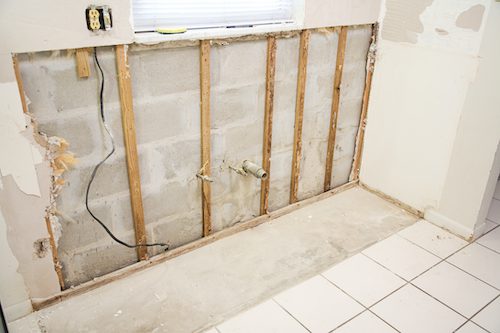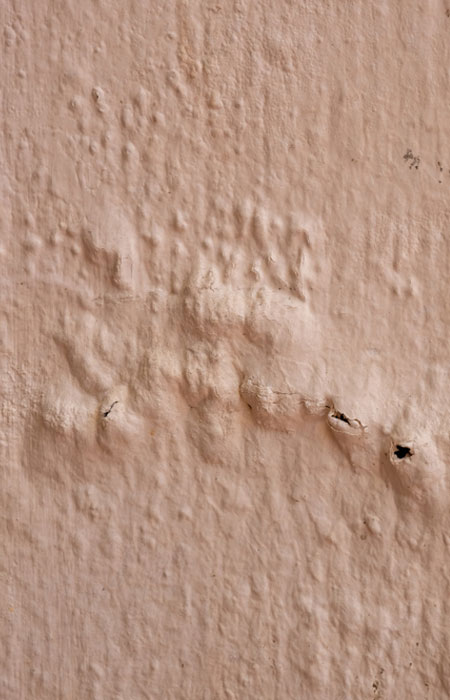The content below pertaining to How to Remove Water Stains from Walls and Ceilings is incredibly fascinating. Don't miss it.

Water stains on walls are not enjoyable to the eyes. In some cases it seems almost inevitable to experience water stains on walls in residences.
House owners living in humid regions frequently deal with the concern of water stains on wall surfaces. With all-round as well as accurate details on the reasons of water stains and also timely repair procedures, you will always be an action ahead of such events.
3 Typical Reasons For Water Discolorations on Wall Surfaces
Contrary to common belief, water spots on wall surfaces do not always originate from bad structure materials. There are several root causes of water stains on wall surfaces. These include:
Wet
When hot wet air consults with dry chilly air, it causes water beads to form on the wall surfaces of buildings. This happens in washrooms as well as cooking areas when there is heavy steam from food preparation or showers. The water beads can stain the surrounding walls in these parts of your residence as well as infect other locations.
Wet or condensation affects the roof and walls of buildings. When the wall is wet, it creates a suitable environment for the growth of microbes and fungi.
Poor Water drainage
When making a building plan, it is important to guarantee sufficient drainage. This will prevent water from seeping into the wall surfaces. Where the water drainage system is obstructed or missing, below ground wetness builds up. This links to excessive moisture that you see on the wall surfaces of your structure.
So, the leading root cause of damp wall surfaces, in this instance, can be an inadequate water drainage system. It can also be due to poor management of sewage pipes that run through the structure.
Pipe Leaks
The majority of homes have a network of water pipes within the walls. It always increases the viability of such pipes, as there is little oxygen within the walls.
A downside to this is that water leakage affects the walls of the building and also creates prevalent damages. An indicator of defective pipes is the look of a water tarnish on the wall surface.
Pro Suggestion
A houseplant in your home additionally raises its moisture. So, if your home is already moist, you might want to present houseplants with very little transpiration. An example of suitable houseplants is succulents.
Water Discolorations on Wall Surface: Repair Work Tips
When dealing with water spots, property owners would generally desire a quick fix. Yet, they would certainly soon understand this is detrimental as the water stains persist. Here are a couple of handy tips that will certainly lead you in the repair of water spots on wall surfaces:
Conclusion
Although nobody intends to have water discolorations on walls in their home, it can occur to the most effective people. This short article provides you utilize, as you currently recognize how to handle this incident if it does take place.
It is constantly best to hire professional services to assist take care of the problems in your house.
Sometimes it seems practically unavoidable to experience water spots on wall surfaces in residences.
In contrast to popular belief, water spots on wall surfaces do not constantly stem from inadequate structure products. There are several reasons of water discolorations on wall surfaces. The water beads can tarnish the bordering wall surfaces in these components of your house as well as spread to various other locations.
Below are a couple of practical pointers that will certainly lead you in the fixing of water discolorations on wall surfaces:
How to Fix Water Stains On Walls
Water stains on walls aren’t something anyone enjoys to look at in their home. It might seem like an easy option to just paint over the stain, but it will take more than that. It’s very important to determine if there is an ongoing problem causing the stain, and fixing that before you go any further. If you don’t follow the steps, you could have more problems down the line.
Solve the Underlying Issue
Water stains on walls are a big sign of water damage. Seeing this is your signal to find out where the water could be coming from. Most likely this is due to a leak somewhere in your plumbing, but there could be other causes. These problems can be from somewhere outside your home as well. If you can’t determine where the leak is coming from, call your local plumber to find the leak and repair it.
Here are some common reasons water damage can occur:
Plumbing failures Construction failures Natural events Appliance failures Dry the Area
Once you’ve fixed the underlying problem, you need to make sure the area is completely dry. You can do this using dehumidifiers and fans. Place the dehumidifier on the highest setting in between two fans. Depending on how large the stain is, it can take hours to completely dry. Even if the wall only feels a little damp, it’s still important to fully complete the drying process. If you’re in count, go ahead and allow the fans and dehumidifier to run overnight.
Remove Loose Material
Water stains on walls may be covering more damage than what you can see. Use a painter’s knife or a putty knife to scrape away at any loose paint or material from the wall. If the damage is minor, you will just be scraping away at the layers of paint. If the damage is more prominent, you may need to scrape away deeper into the wall to remove all the damaged material.
Clean the Area With Bleach
Once you’ve removed all the damaged material and the water stains from the walls, use a bleach mixture to sanitize the area. If it’s not sanitized, it can lead to mold. Carefully wipe down the area to avoid letting bleach drip onto your floors or furniture. Make sure when you are cleaning the area to get into every crevice to ensure mold will not be able to grow. After you have done this, allow it to air dry completely before moving to the next step.
Repair the Wall if Needed
Now that the area is cleaned, it’s time to repair the wall. If you had to scrape away at more than just the paint on the wall, you will need to use drywall mud to fill in any cracks, dents, or crevices. Use your painter’s knife to smooth it over and let it dry. Use some sandpaper to sand it down to make it even with the wall. If you need to do a few layers, that’s completely fine. Just make sure to allow it to dry between each layer.
https://www.1tomplumber.com/how-to-fix-water-stains-on-walls/

I was made aware of that article on Water Stains on Walls through a friend on another web address. Sharing is nice. You won't know, you might be helping someone out. We enjoy reading our article about .
Details Here